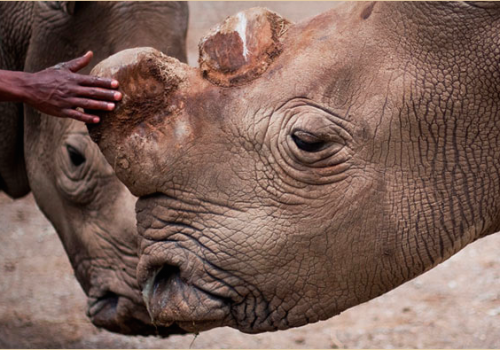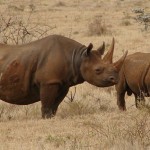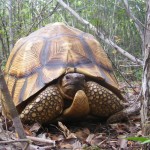Courtesy of Ol Pejeta Conservancy

(Nanyuki – Kenya) – Artificial techniques of reproduction could provide the last chance of survival for the world’s most endangered mammal: the northern white rhino.
This conclusion from veterinary experts comes as a much-needed ray of hope to those involved in the conservation of the animals, both in Europe, the United States, and in Kenya – where three of the world’s last remaining six Ceratotherium simum cottoni now live.
Following the October 2014 death of Suni – the last fertile northern white male in Ol Pejeta Conservancy – experts from the Dvur Kralove Zoo in the Czech Republic, the Leibniz Institute for Zoo and Wildlife Research in Germany and the Kenya Wildlife Service gathered in Laikipia, Kenya to carry out health checks on the remaining three rhinos. Dvur Kralove Zoo was home to Najin, Fatu, Suni and Sudan until 2009 – when a bold decision was made to move them to Ol Pejeta Conservancy in the hope that natural conditions would be more conducive to reproduction. Various copulations between the northern whites have been witnessed by their keepers, and even a mating between a southern white male and one of the northern white females, but nothing has come to fruition.
It is clear that five years on, and with the sudden death of Suni, more drastic action is going to have to be taken if this species stands any chance of survival.
Despite concerns over age and physical condition, the three rhinos were successfully anaesthetised. Examinations of the two females showed that neither is capable of natural reproduction. Sadly, the younger rhino Fatu has degenerative lesions in the uterus, but there is still hope that her mother, Najin, could conceive. Her reproductive organs are in good health, but her weak hind legs make it difficult for her to support a mounted male, and could also cause complications during the added weight of pregnancy. Samples from the male, Sudan, showed a low sperm count, with low motility and some morphological abnormality. This does not rule out using his sperm for in vitro fertilisation however.
“We have provided the northern white rhinos with the best possible conditions for natural mating. However, recent death of the last male that was capable of reproduction and current health-state of the remaining three individuals lead to a situation in which the committee of experts in charge of this programme will now need to explore suitable options of artificial reproduction” said Richard Vigne, CEO of Ol Pejeta Conservancy.
Artificial techniques of reproduction do not come without risks, but experts believe that all other options have now been exhausted – and time is running out. The committee overseeing the project will now discuss the findings from the vet tests and agree on the best way forward.
“We must bear in mind that these rhinos are last of their kind, and we cannot just give up and let them go extinct,“ said Premysl Rabas, director of the Dvur Kralove Zoo.




